More and more children are being identified with Sensory Processing Disorders (SPD). Years ago children with sensory issues were dismissed as being difficult and defiant. Thankfully, we are now more informed about sensory processing disorders and the needs that these children may have.

EVERYONE IS SENSORY PROCESSING ALL THE TIME! Every person, at any given time, is processing using their senses. A SPD exists when a person’s nervous system cannot organize the sensory input into appropriate responses, creating a kind of sensory ‘traffic jam’. One sense may getting to much input and another not enough. This is when we see those ‘sensory seeking’ behaviors. The body is reaching out to the environment to get needed input.
We may see these sensory seeking behaviors in children with:
– SPD
– ADHD/ADD
– Autism
– Aspergers, etc.
So what can we do to help our students with these sensory issues during the school day? I’m glad you asked! There are lots of little tips and tricks to help these students get the input they need without standing out to much.
1. Give Them A Hand
Something small that a student can play with in their hands can help to give them some sensory feedback and input.
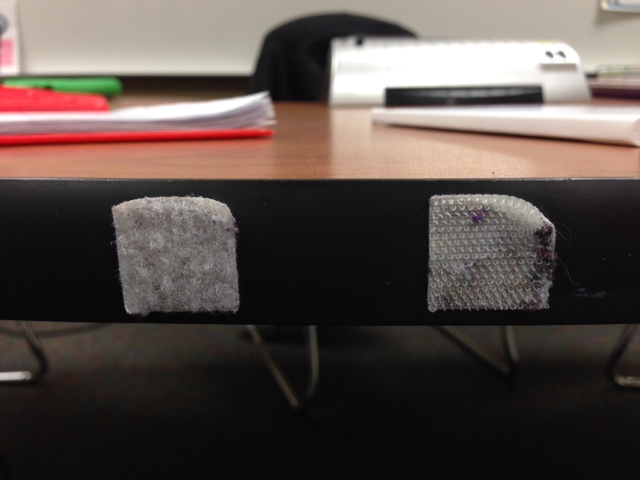
I have velcro ( hard and soft ) on the edges of my speech table to kids to use during therapy. I also have sticky tac that my students can use.

Sticky tac is a nice alternative if you don’t have anything like Thera-Putty available. The big difference is that sticky tac will get softer the more its played with.

A bouncy ball is also another option. It has some give but is also firm and won’t change textures. I have a basket of various sensory items that my students can pick from. Now there can be a downside here. Depending on the student, the day, the need, they can get fixated on what they have. Start by giving them the object in small doses, about 5 minutes at a time and go from there.
2. Sit and Stay for Awhile
Sitting and paying attention in class do not always go hand in hand. This is when we see kids get a case of the ‘fidgets’. They wiggle, squirm, rock, tap their feet, and may even get up and take a walk around the room. When these situations come up there are a few options that may help your student.
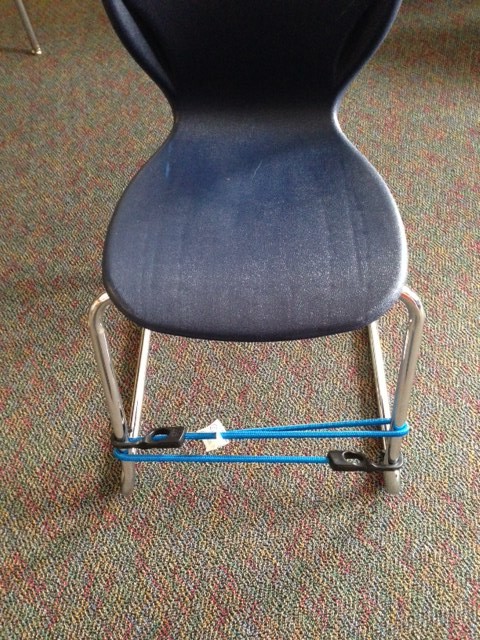
A bungee cord wrapped around the front legs of the chair provides resistance and give. Students can kick and tap against the cord without causing a disturbance in the class.
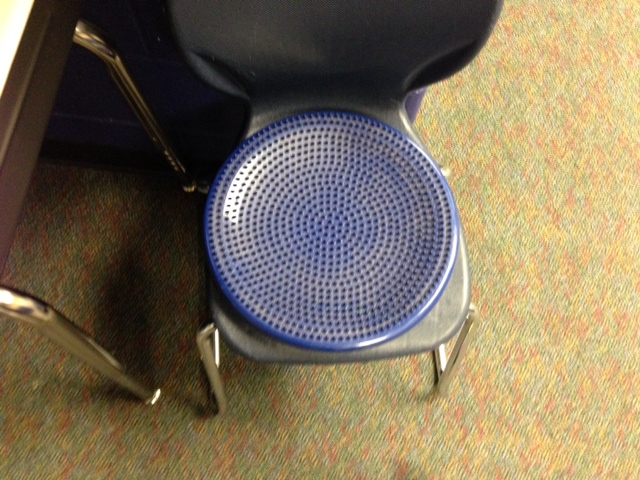
A seat fidget can allow students to rock in wiggle without causing a lot of attention to themselves. If they still need some movement try a stability ball instead of a chair. If you want a seat fidget, talk with your OT. They have lots of great fidgets to meet your kids needs.

Stability balls engage a students body without them really knowing it. This allows their mind to focus more on you. Here is a post about using stability balls in the speech room if you want more information.
3. Let There Be Light
Let’s face it, the fluorescent lighting in schools is a pain. It’s bright, harsh, and can sometimes sound like a bee hive moved in. Most of us can tune these irritating features out. However, we know some students can’t.

A great alternative is to get some lamps to use instead. A few well placed table lamps, or a combination of floor and table lamps, can give you plenty of light that you can control. With the right bulbs you can get a nice, warm glow instead of a harsh, bright light. And the best part, no buzz!
4. Take A Walk
When in doubt take a walk. Have a student take a break and go ‘deliver a note’ to the office or another teacher. I just grab piece of paper and write something like, ” Johnny needed a break ” on it so the recipient understands the situation. Depending on my students, I will also have them deliver some paper for me. A ream of paper is about 5 lbs. Adding a small amount of weight to the walk ( if it is appropriate for the student ) can help. A backup with a science and social studies book in it will also do the trick.
5. Give Them Some Space
Some students with sensory needs have a hard time organizing their space. Keeping these students at the end of the table allows them to spread out their materials without intruding on another students space. In the classroom, you may also want to think about giving them an extra desk if it is available. Again this gives them more space to spread out and organize their materials without encroaching on someone else’s space and work.
Additional Resources
For more information on SPD you can check out this post. You can also visit the Sensory Processing Disorder Foundation website. Here are some books that may help your kids and their classmates get some perspective and understanding on their sensory needs. Thanks to PediaStaff for sharing these on Instagram!

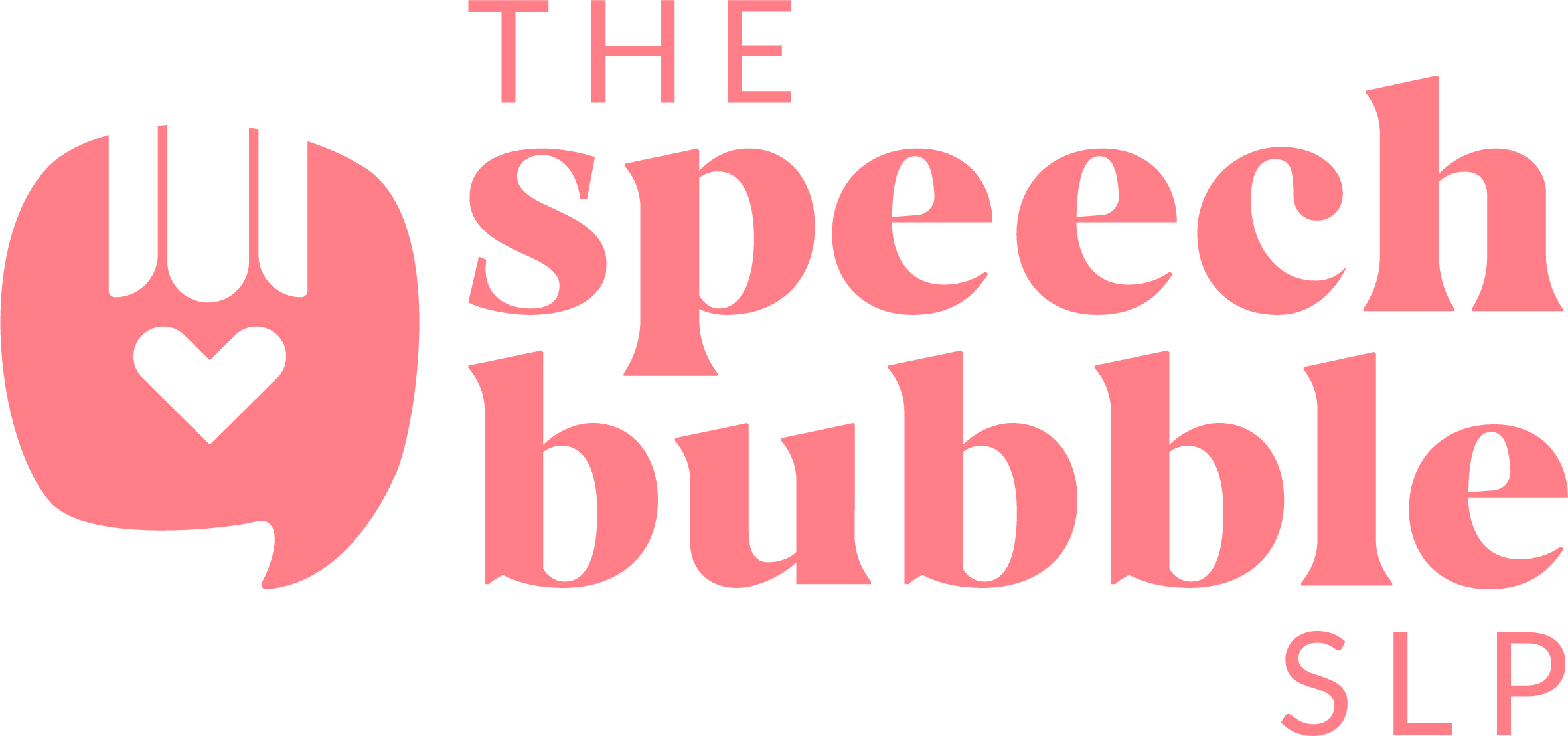








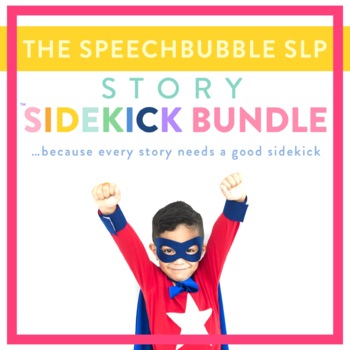







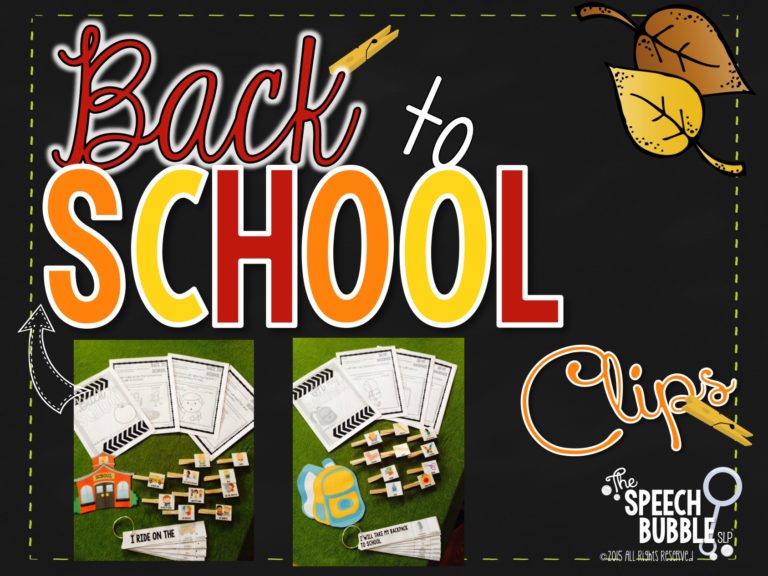


9 Responses
I love the idea of allowing students to take a break. The simple activity of getting out of the room for a quick minute to deliver a “note” to another teacher does WONDERS! Thanks so much for mentioning this. You rock!
For younger children with SPD, do you have a specific picture that you use to indicate a “break” or make the idea of a break more concrete?
I will usually use a clock with a boy or girl ( depending on the kid ) and the text ” I need a break.” on it. But there have been times when the students and I will figure out what will work for them. Sometimes they want a specific character or superhero.
Thanks so much!
I have a boy or girl with a clock next to them and the phrase ‘I need a break.’ below it. I will usually ask the students what they think will help them so they feel they are a part of the decision.
These are all amazing ideas!!!
Thanks so much CC!
Thanks so much CC 🙂